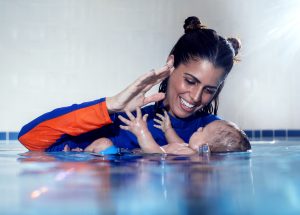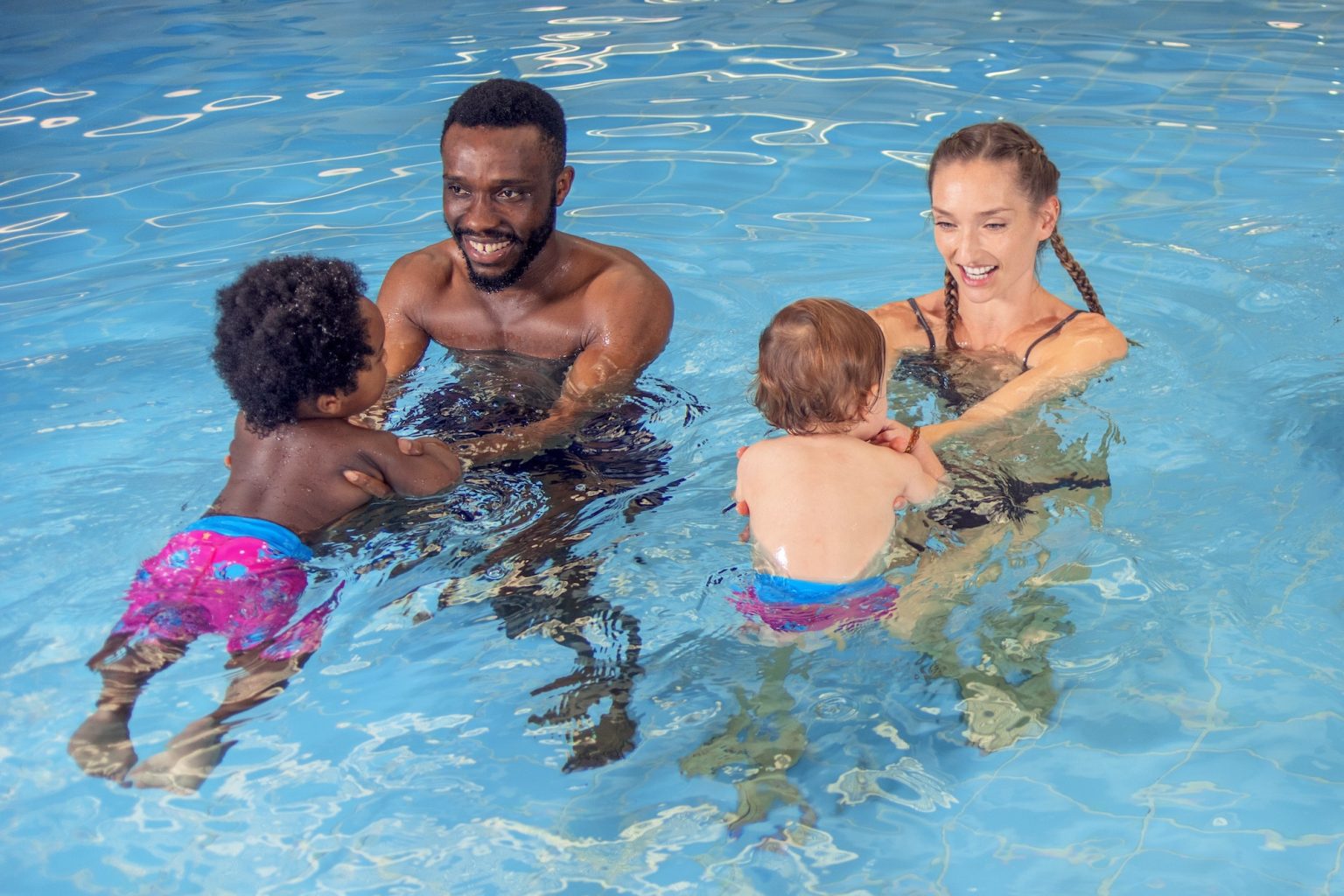Taking your baby swimming for the first time can be an exciting yet anxious experience. Whether you choose to start taking your little one to the pool from a young age or if you’d rather wait a few months, the experience doesn’t have to be one that fills you with dread. In fact, studies have shown that time spent one-on-one with your little one in the pool can strengthen your bond with them and helps to release the endorphins that are so needed during the early days of parenthood.
In a bid to support you to get the most out of your first time in the pool together, baby swim school owner Tamsin Brewis has put together a step-by-step guide to help ease your worries and make the outing enjoyable for both you and your little one.

Choose the right pool
One of the biggest considerations when looking for lessons or suitable sessions for your little one is the temperature of the pool. At Water Babies, we only swim in pools which have been heated to at least 30°C. If your baby is less than 12 weeks old, or weighs less than 12lbs, the temperature of the pool must be 32°C. Remember that it’s totally safe for your child to swim from the day that they’re born, as long as you take necessary precautions – but any good swimming school will be able to help you.
Time it right
During the newborn days, when your little one is likely to sleep for most of the day, it can be hard to plan your routine around nap time. But when your child is a little bit older, it’s best to plan your pool visit or swimming lesson around their usual nap schedule so you can both get the most out of your time together.
I would recommend only spending 20-40 minutes in the pool at a time, as your little one may struggle to regulate their body temperature for much longer than that. This is ample time to enjoy the experience together.
And enjoy the longer than usual nap your child will have after a splash in the pool! Even for the newest of newborns, swimming – for parent and baby! – can be a tiring experience. Schedule some ‘me-time’ to recharge those batteries whilst your little one takes a nap after your session.
Gather the essentials
This is probably the question I get asked most regularly – what do I need to pack for a swimming lesson for me and baby? You’ll be relieved to know it’s not as much as you think!
Different pools and swimming schools will have different rules about what your little one should wear, but at Water Babies we ask that every water baby wear our double nappy system. This is a paper or reusable swim nappy, with an approved neoprene Happy Nappy over the top. We advise that toddlers under two swimming in a pool that’s at 30°C wear a wetsuit. As a parent, you are fine in your usual swimming attire, but some parents choose to wear goggles too.
Here’s a short list of the other items to remember.
• Changing mat – a small, rollable one is great.
• Towel – one for you, one for baby!
• Warm clothes and hat – these are for your little one to wear after their lesson. A fleece or cotton onesie (depending on the time of the year!) is a good option as they’re easy to pull on and zip up in a rush. As for parent, I would recommend opting for loose and comfortable clothing that can be pulled on easily. Pulling on a pair of jeans after swimming is rarely a fun, or quick, experience!
• Snacks – a good distraction for older children while you get dry and changed!
Prepare yourself
Depending on where you end up swimming, it’s important to familiarise yourself with pool rules and emergency procedures. This is just as a precaution really.
The good news is that, if you are attending lessons, your teacher will run through all of this with you at your first lesson. Being safe in and around the water is crucial, and ensuring you understand the protocols will help you to remain calm and enjoy your time.
Our classes are all about teaching babies, toddlers and pre-schoolers how to stay safe in the water, so this is taught during every session.
Get comfortable
Before getting in, let your baby dip their toes in the water. This helps them acclimate to the sensation. When you get into the water, keep your baby securely in your arms. Close contact will provide them with comfort.
Have fun!
Use gentle splashing or soft movements to engage your baby – you could even bring along a few bath toys for added fun. Singing can soothe your baby and create a joyful atmosphere. It also helps drown out any pool noise and helps your little one focus on you and your time together. And if your baby seems unhappy, it’s okay to take a break or leave the pool – if you’re swimming at a lesson, your teacher will offer reassurance that all babies go through a phase of not enjoying the pool, even for the more experienced swimmers! We call this the Water Wobbles.
Aftercare
After swimming, wrap your baby in a soft towel to keep them warm. A warm drink or snack can also be comforting. Talk about the fun moments, share news of milestones with family and friends, and reassure your little one that you’ll go again.
Tamsin concludes, “Remember, every baby is different, and their comfort level in the water will vary. Focus on building a positive experience and bonding with your child. With time, patience, and practice, you both can enjoy many fun-filled swimming sessions together!”

For more information about Water Babies Bucks & Beds, visit: www.waterbabies.co.uk/lp/baby-swimming/bucks-and-beds

